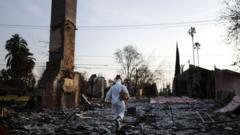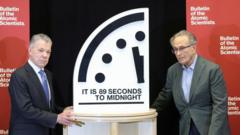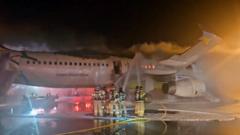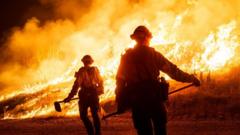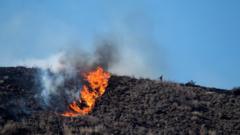Shift in weather conditions offers relief to exhausted firefighters battling the ongoing wildfires in Los Angeles, with thousands still under evacuation orders and critical risks remaining.**
Firefighters Gain Ground as Winds Diminish in Los Angeles Wildfires**
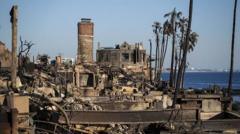
Firefighters Gain Ground as Winds Diminish in Los Angeles Wildfires**
Respite from strong winds aids containment efforts amidst historical fire devastation in California's largest city.**
Firefighters battling two destructive wildfires across Los Angeles are experiencing a much-needed respite as near hurricane-strength winds have finally weakened, allowing crews to make significant progress in their containment efforts. With the fires burning for over nine days, officials report that the blazes, spread across nearly 40,000 acres, have seen little to no growth in the past 24 hours. However, they continue to urge caution as unburned fuel and low humidity present ongoing risks.
As of Thursday morning, at least 27 lives have been lost and over 12,000 structures destroyed in what has been deemed one of the worst wildfire seasons in recent memory. Fire Chief Anthony Marrone reassured the public at a press conference, stating, “Our firefighters continue to work 24/7 to achieve full containment of these wildfires as fast as we can.” The situation is so severe that additional firefighting resources have been requested from neighboring states like Mexico and Canada.
Though evacuation orders remain in place for roughly 82,400 residents, many were lifted later Thursday for certain communities impacted by the Eaton and Palisades fires. Residents returning must verify their residency and take caution against toxic debris. The National Weather Service has lifted red flag warnings but warned that dangerous conditions may quickly return, particularly with Santa Ana winds predicted to resume early next week.
As of now, the Palisades Fire has burned 24,000 acres and is approximately 20% contained, while the Eaton Fire has consumed over 14,000 acres and is 55% contained. Despite some residents being able to return home, a number of individuals remain unaccounted for, with 31 active missing persons reports filed in the area.
Many experts attribute the severity of the fires to climatic changes exacerbated by human influence, leading to volatile weather patterns. As conditions become increasingly warmer and drier, scientists emphasize the need for continued awareness and preparedness in the face of these natural disasters.
While firefighters see the light at the end of the tunnel, the road to recovery remains long as communities look to rebuild and rehabilitate after the unprecedented destruction.


